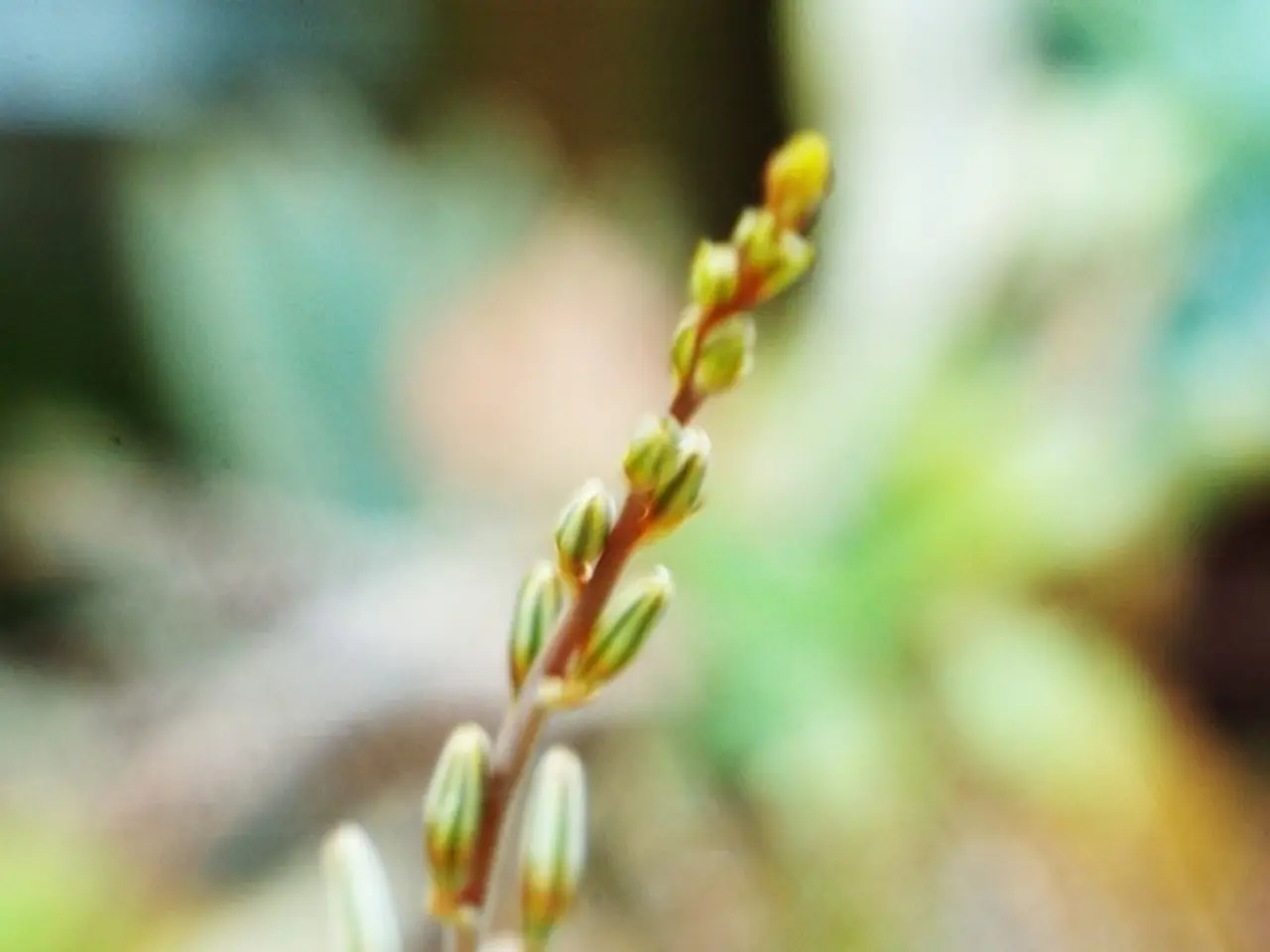Cultivating Polka Dot Plants in Soil: A Simple Step-by-Step Guide
Propagating a Polka Dot Plant: A Step-by-Step Guide
Polka dot plants, scientifically known as Begonia maculata, are popular for their vibrant leaf patterns. If you're looking to propagate one, here's a simple guide to help you get started.
Step 1: Preparing the Cutting
- Choose a healthy stem with several leaves, about 10 cm (4 inches) long.
- Cut the stem just below a leaf node using clean, sharp scissors or pruning shears.
- Remove leaves from the bottom half of the stem cutting.
- Optionally, dip the cut end into rooting hormone powder to encourage root growth.
Step 2: Choosing the Right Soil
Use a well-draining soil mix suitable for begonias. A mix of potting soil with perlite or peat moss works well to prevent waterlogging and root rot.
Step 3: Maintaining Soil Moisture
Keep the soil moist but not soggy. Water enough to keep the cutting’s soil damp to promote root development but avoid standing water that can cause rot.
Step 4: Selecting the Right Pot
Use a pot with drainage holes to ensure excess water can escape, preventing waterlogged conditions harmful to the cutting.
Step 5: Applying Rooting Hormone
Applying a rooting hormone powder to the cut end of the stem before planting promotes faster and healthier root growth, but it is optional.
Step 6: Providing the Right Light
Place the cutting in bright, indirect light. Avoid direct sunlight which can scorch the leaves and stress the new cutting. A spot with filtered light or near an east-facing window is ideal.
Step 7: Maintaining the Right Temperature
Maintain a warm environment, ideally around 18–24°C (65–75°F), which is typical room temperature. Avoid cold drafts or sudden temperature drops which can hinder rooting.
Step 8: Managing Humidity
Polka dot plants prefer moderate to high humidity to thrive. Maintaining humidity around 50–60% helps prevent leaf drying and supports rooting. You can increase humidity by misting the cutting or placing a humidity dome or clear plastic bag over the pot (with ventilation to prevent fungal growth).
By following these guidelines, you can successfully propagate a polka dot plant in soil with healthy root development and strong new growth. Happy propagating!
Sources: - The detailed propagation and care steps for Begonia maculata are summarized mainly from [1], with complementary light and moisture context from related houseplant care practices. - Polka dot plants also appreciate high humidity, ideally between 50% and 70%.
- When you've successfully propagated your polka dot plant, consider expanding your gardening endeavors to include home-and-garden projects, such as a small home-and-garden landscaping project that incorporates polka dot plants with other vibrant, colorful plants to enhance your lifestyle.
- As your propagated polka dot plant establishes itself, explore the world of home-and-garden design for creative ways to incorporate its unique pattern and texture into various aspects of your lifestyle, such as indoor container gardening or outdoor garden landscaping to beautify your living spaces.




